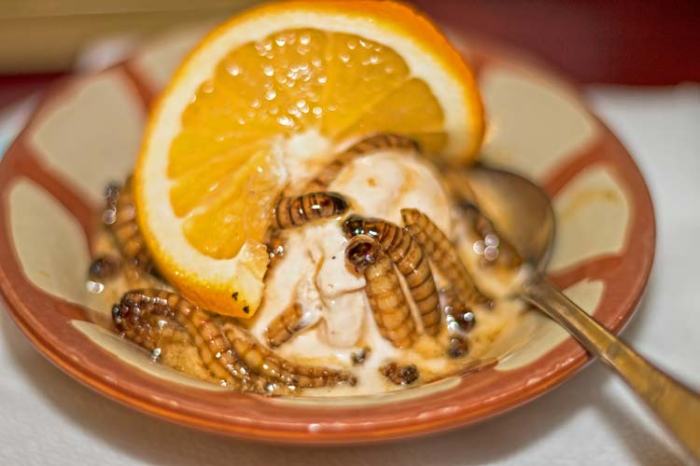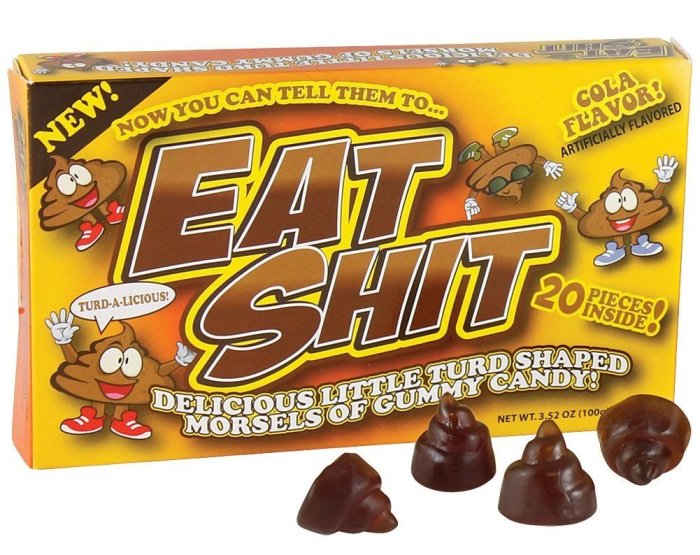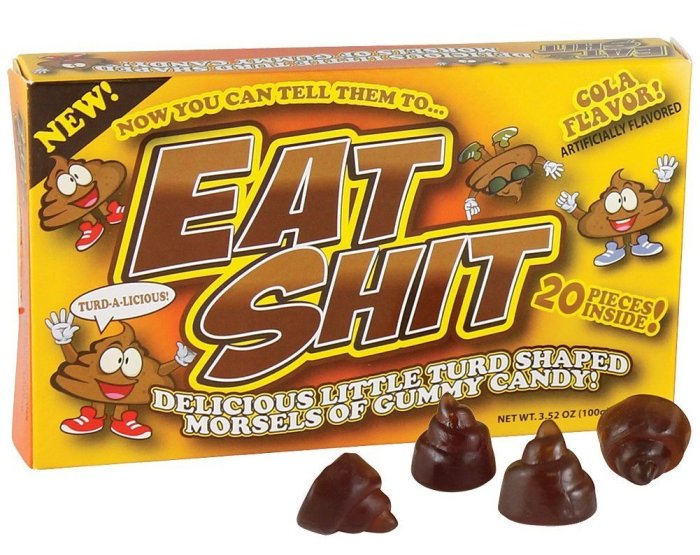Weird sweets, a realm of culinary curiosities, beckon us to embark on a delectable adventure where taste buds dance to unexpected rhythms. From audacious flavor combinations to visually captivating creations, these unconventional treats defy norms and challenge our perceptions of what sweets can be.
Prepare your palate for a sensory expedition as we delve into the fascinating world of weird sweets, exploring their unique ingredients, innovative textures, and cultural influences that have shaped their existence.
Unusual Flavor Combinations
Weird sweets often feature unusual flavor combinations that challenge the norm and create unique taste experiences. These combinations blend unexpected ingredients and flavors, resulting in surprising and often delightful treats.
One common strategy is to pair sweet and savory flavors, such as in bacon-chocolate truffles or salted caramel popcorn. The contrast between the sweet and salty elements creates a complex and satisfying flavor profile. Another approach is to combine different types of sweetness, such as in the combination of honey and maple syrup or the layering of different types of chocolate in a candy bar.
Examples of Weird Sweet Combinations
- Chocolate-covered bacon:A classic combination that pairs the sweet richness of chocolate with the salty smokiness of bacon.
- Salted caramel popcorn:A popular treat that combines the sweet and salty flavors of caramel with the crunchy texture of popcorn.
- Honey-maple syrup:A natural sweetener that blends the floral notes of honey with the earthy sweetness of maple syrup.
- Chocolate-covered fruit:A classic combination that pairs the sweetness of fruit with the richness of chocolate.
- Candy bars with multiple types of chocolate:A combination that layers different types of chocolate, such as milk chocolate, dark chocolate, and white chocolate, to create a complex flavor experience.
Surprising Ingredients
Weird sweets often incorporate unconventional ingredients that contribute to their unique flavors and textures. These ingredients can range from savory to sweet, and they are used to create unexpected and often delightful combinations.
One reason for using surprising ingredients in sweets is to create a contrast between flavors. For example, salty bacon can be added to chocolate chip cookies to create a sweet and savory combination. Another reason is to add complexity to the flavor profile.
For example, using herbs and spices in sweets can add depth and interest.
Savory Ingredients
- Bacon:Bacon is a popular ingredient in weird sweets because it adds a salty and smoky flavor. It can be used in cookies, brownies, and even ice cream.
- Cheese:Cheese is another savory ingredient that can be used in sweets. It adds a creamy and tangy flavor, and it can be used in cheesecakes, cookies, and even chocolate bars.
- Olives:Olives are a salty and briny ingredient that can be used in sweets to add a unique flavor. They can be used in cookies, cakes, and even ice cream.
Floral Ingredients
- Lavender:Lavender is a floral ingredient that can be used in sweets to add a calming and relaxing flavor. It can be used in cookies, cakes, and even tea.
- Rose:Rose is another floral ingredient that can be used in sweets to add a sweet and fragrant flavor. It can be used in cookies, cakes, and even jams.
- Chamomile:Chamomile is a floral ingredient that can be used in sweets to add a calming and soothing flavor. It can be used in cookies, cakes, and even tea.
Spicy Ingredients
- Chili peppers:Chili peppers are a spicy ingredient that can be used in sweets to add a kick of heat. They can be used in cookies, cakes, and even chocolate bars.
- Ginger:Ginger is a spicy ingredient that can be used in sweets to add a warm and spicy flavor. It can be used in cookies, cakes, and even tea.
- Cinnamon:Cinnamon is a spicy ingredient that can be used in sweets to add a warm and sweet flavor. It can be used in cookies, cakes, and even tea.
Innovative Textures
Weird sweets often feature unusual and unexpected textures that enhance the sensory experience and challenge traditional notions of confectionery. These textures can range from soft and chewy to crispy and crunchy, adding layers of complexity and interest to the taste buds.
Examples of specific weird sweets that showcase different textures include:
Chewy and Gooey
- Mochi: A Japanese rice cake that is soft and chewy, often filled with sweet fillings like red bean paste or ice cream.
- Turkish Delight: A gelatin-based candy that is soft and chewy, often flavored with rose water or pistachios.
Crispy and Crunchy
- Pocky: A Japanese snack consisting of thin, crispy biscuit sticks dipped in chocolate or other flavors.
- Crunchy Frog: A British chocolate candy that features a crispy, crunchy texture on the outside and a soft, chocolatey center.
Fluffy and Aerated
- Marshmallows: A light and fluffy confection made from sugar, corn syrup, and gelatin.
- Cotton Candy: A spun sugar treat that is light and airy, melting in the mouth.
Visual Aesthetics

Weird sweets often possess striking and unconventional visual appearances that contribute significantly to their appeal. These aesthetics challenge traditional notions of confectionery design, capturing attention and piquing curiosity.
One notable characteristic is their vibrant and unusual color combinations. For instance, the Japanese confection “Taiyaki” features a fish-shaped waffle filled with sweet red bean paste, creating a vibrant contrast between the golden-brown exterior and the crimson filling.
Playful and Whimsical Designs
Weird sweets frequently adopt playful and whimsical designs that evoke a sense of wonder and amusement. The Turkish delight “Lokum,” for example, comes in a variety of intricate shapes and colors, resembling tiny jewels or exotic flowers.
Cultural Influences
Weird sweets often reflect the cultural heritage and traditions of their regions. Different cultures have shaped the development of these unique treats, resulting in a diverse range of flavors, textures, and presentations.
For example, in Japan, mochi is a traditional sweet made from glutinous rice flour. It is often filled with sweet red bean paste or other flavors and has a soft, chewy texture. Mochi is believed to have originated in China and was introduced to Japan during the Heian period (794-1185).
In Mexico, dulce de lecheis a popular sweet made from sweetened condensed milk. It is often used as a filling for pastries or eaten on its own. Dulce de lecheis believed to have originated in Argentina and is now popular throughout Latin America.
These are just a few examples of how cultural influences have shaped the development of weird sweets. By exploring the origins and traditions behind these unique treats, we can gain a deeper understanding of the cultures that created them.
Historical Evolution
The origins of weird sweets can be traced back to ancient civilizations, where unusual ingredients and flavors were often used for medicinal or ceremonial purposes. Over time, societal changes and technological advancements have significantly influenced the development of these confections.
Changing Tastes and Preferences, Weird sweets
As societies evolved, so did their tastes and preferences. The introduction of new ingredients from around the world, such as sugar, spices, and chocolate, led to the creation of new and exotic sweets. The rise of the middle class and the availability of leisure time also contributed to the demand for more elaborate and unusual confections.
Technological Advancements
Technological advancements have also played a crucial role in the evolution of weird sweets. The invention of refrigeration allowed for the creation of frozen treats like ice cream and sorbet, while the development of mass production techniques made it possible to produce these sweets on a larger scale.
Examples of Evolution
Over time, weird sweets have evolved in various ways, including:
- The use of more unusual ingredients, such as insects, seaweed, and flowers
- The creation of new flavor combinations, such as sweet and savory or sour and sweet
- The development of innovative textures, such as chewy, gooey, and crunchy
- The introduction of new visual aesthetics, such as bright colors, unusual shapes, and edible glitter
Health Considerations
Consuming weird sweets can have potential health implications, depending on the ingredients used and the frequency of consumption.
Nutritional Value
Many weird sweets contain high levels of sugar, unhealthy fats, and calories. Excessive consumption can lead to weight gain, tooth decay, and an increased risk of chronic diseases such as type 2 diabetes and heart disease. However, some weird sweets may also contain beneficial nutrients, such as vitamins, minerals, and antioxidants.
Potential Risks
Certain weird sweets may contain ingredients that pose health risks. For example, sweets made with raw or undercooked animal products can harbor bacteria or parasites. Sweets containing artificial sweeteners or sugar alcohols can cause digestive problems in some people. Additionally, excessive consumption of caffeine or other stimulants found in some weird sweets can lead to anxiety, insomnia, and other health issues.
Enjoying Weird Sweets in Moderation
To enjoy weird sweets without compromising health, consider the following guidelines:
- Limit consumption to occasional treats rather than daily indulgences.
- Choose weird sweets made with healthier ingredients, such as whole grains, fruits, and natural sweeteners.
- Pay attention to portion sizes and avoid overeating.
- Brush your teeth after consuming sugary sweets to prevent tooth decay.
- Consult with a healthcare professional if you have any concerns about the health implications of consuming weird sweets.
Social Impact
Weird sweets have had a significant social and cultural impact, becoming symbols of innovation and creativity. They have influenced popular culture and social interactions in various ways.
Popularity and Social Acceptance
The growing popularity of weird sweets has challenged traditional notions of what constitutes a “normal” or “acceptable” dessert. These treats have become more socially acceptable and are increasingly seen as symbols of experimentation and openness to new experiences.
Symbol of Innovation and Creativity
Weird sweets have emerged as symbols of innovation and creativity within the culinary world. They push the boundaries of flavor combinations, textures, and visual aesthetics, encouraging experimentation and a willingness to break away from conventional dessert norms.
Social Interactions and Bonding
The consumption of weird sweets has become a social activity, fostering connections and conversations. Sharing these unusual treats with others can create a sense of camaraderie and provide an opportunity to bond over shared experiences of trying something new and different.
After a night out exploring best night clubs in europe , you might be craving something sweet to satisfy your late-night cravings. Weird sweets can be the perfect solution. From gummy worms to chocolate-covered bacon, there are plenty of strange and wonderful sweets to choose from.
Whether you’re looking for a sugary snack or a unique gift, weird sweets are sure to please.
Cultural Influences
Weird sweets often reflect cultural influences, incorporating flavors, ingredients, and techniques from diverse cuisines. This has led to a cross-pollination of ideas and the creation of new and exciting flavor combinations that transcend cultural boundaries.
Marketing Strategies: Weird Sweets
The marketing of weird sweets poses unique challenges due to their unconventional flavors and ingredients. However, these challenges also present opportunities for innovative and effective marketing strategies.
One key strategy is to emphasize the novelty and uniqueness of the product. This can be achieved through creative packaging, eye-catching displays, and social media campaigns that highlight the unusual aspects of the sweet.
Target Audience
Targeting the right audience is crucial. Weird sweets may appeal to niche markets such as adventurous foodies, collectors of unusual items, or those seeking a unique sensory experience.
Influencer Marketing
Collaborating with food bloggers, social media influencers, and culinary personalities can help generate buzz and credibility for weird sweets. These individuals can share their experiences and reviews, which can influence the purchasing decisions of potential customers.
Experiential Marketing
Hosting tasting events or pop-up shops allows consumers to sample weird sweets firsthand and experience their unique flavors and textures. This can create a memorable and engaging experience that encourages trial and repeat purchases.
Online Presence
A strong online presence is essential for marketing weird sweets. A dedicated website or e-commerce platform should provide detailed product descriptions, customer reviews, and engaging content that showcases the uniqueness of the product.
Future Trends
The future of weird sweets holds exciting possibilities as evolving consumer preferences and technological advancements shape their development. Innovative flavors, textures, and visual aesthetics will continue to push the boundaries of culinary creativity.
One emerging trend is the use of AI and machine learning to create novel flavor combinations and predict consumer preferences. This technology can analyze vast amounts of data on flavor profiles, dietary restrictions, and cultural influences to generate unique and unexpected sweet treats.
Sustainability and Health Consciousness
As consumers become more health-conscious, the demand for healthier weird sweets will increase. This may lead to the development of low-sugar, low-calorie, and plant-based alternatives to traditional sweets.
Cultural Fusion
The globalized food market will continue to influence the development of weird sweets, with flavors and ingredients from different cultures blending together to create exciting new creations.
Experiential Eating
Weird sweets will become more than just a treat; they will be an immersive experience that engages all the senses. Multisensory sweets, such as those that incorporate sound, smell, or touch, will become increasingly popular.
Personalized Sweets
Advances in 3D printing and customization technologies will allow consumers to create their own personalized weird sweets, tailored to their specific preferences and dietary needs.
As weird sweets continue to evolve, they will become more widely accepted and enjoyed by a diverse range of consumers. Their unique flavors, textures, and visual aesthetics will make them a staple of the culinary landscape, pushing the boundaries of what we consider sweet and delicious.
Outcome Summary

Our exploration of weird sweets concludes with a lingering appreciation for the boundless creativity and culinary innovation that drives their existence. These extraordinary confections not only satisfy our sweet cravings but also spark conversations, foster cultural exchange, and push the boundaries of gastronomic experiences.
As we embrace the future of weird sweets, let us anticipate even more unexpected and delightful creations that will continue to tantalize our taste buds and challenge our culinary expectations.
Quick FAQs
What are the most popular weird sweets?
Weird sweets encompass a wide range of unconventional creations, making it difficult to pinpoint the most popular ones. However, some notable examples include bacon-flavored chocolate, wasabi Kit Kats, and black sesame ice cream.
Are weird sweets unhealthy?
Like any sweets, weird sweets should be consumed in moderation as they often contain high levels of sugar and calories. However, some weird sweets may incorporate healthier ingredients, such as fruits, vegetables, or whole grains.
Where can I find weird sweets?
Weird sweets can be found in specialty candy stores, online retailers, and even some grocery stores. They are often available in limited quantities or during special events.



